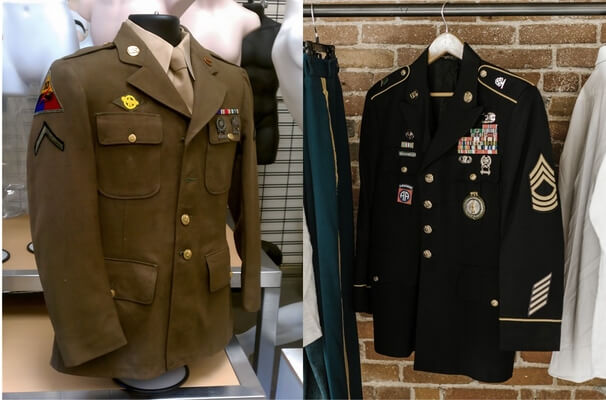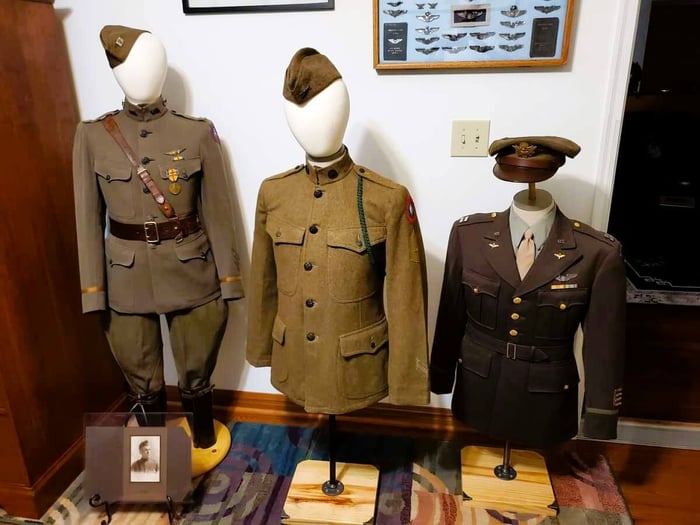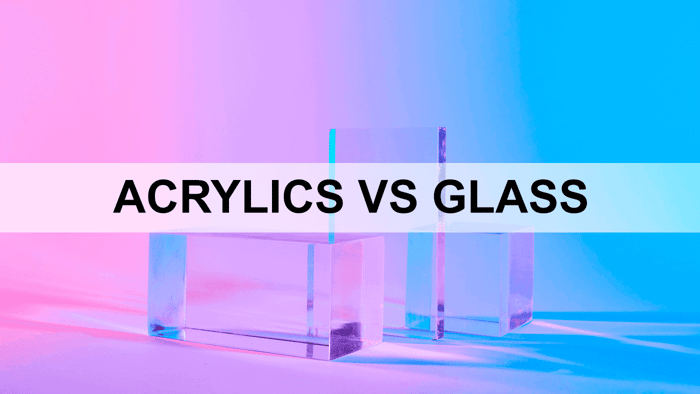
How to use a Military Uniform Display in a Retail Store?
👋 Introduction
When it comes to retail, presentation is everything. This is especially true for military uniform displays, where order, discipline, and heritage play pivotal roles. For retailers, crafting an engaging and professional military uniform display is not just about aesthetics but also about honoring tradition and meeting the needs of a unique customer base. Whether your store caters to active military personnel, veterans, collectors, or historical enthusiasts, the way you showcase military uniforms can make a significant difference in sales and customer satisfaction.
⭐ Key Takeaways
- A well-organized military uniform display can boost sales and enhance the shopping experience.
- Understanding the needs of your target audience, including military personnel, veterans, and enthusiasts, is crucial.
- Display techniques, from mannequins to wall mounts, can significantly impact visual appeal.
A well-curated military uniform display is more than a sales strategy—it’s an opportunity to tell stories of bravery, history, and tradition. When customers see a display that respects the legacy of military service, they are more likely to connect emotionally with the products, leading to increased trust and, ultimately, sales.
Who Buys Military Uniforms and What Are They Looking For?
 Military Uniforms displayed on a store
Military Uniforms displayed on a storeBefore setting up your display, take a moment to identify who your primary customers are. Are you selling to active-duty military members looking for specific uniform components? Are veterans seeking nostalgic pieces? Or perhaps history buffs are searching for accurate reproductions? Each group has different needs, and your display should reflect this.
For example, active-duty personnel might prioritize utility and compliance with regulations, while collectors may value rarity and historical accuracy. By understanding these motivations, you can tailor your display to highlight the most relevant aspects of your inventory. For retailers, this could mean adjusting displays seasonally or in accordance with military holidays or events, further aligning your store with the values of your target audience.
How Should a Military Uniform Section Be Organized in a Store?
 Military Uniform Displayed in a orderly and respectful way
Military Uniform Displayed in a orderly and respectful wayA well-thought-out layout is the foundation of an effective military uniform display. Start by evaluating your store’s floor plan and determining the best location for these items. High-traffic areas are ideal, as they naturally draw attention. However, avoid overcrowding, as military uniforms often carry intricate details that deserve individual focus.
How Can I Divide Military Uniform Displays Into Zones?
Divide your display into zones to improve navigation and storytelling. You might create sections for different branches of the military, historical eras, or specific types of uniforms such as dress uniforms, combat attire, and ceremonial outfits. This approach not only enhances the shopping experience but also makes it easier for customers to find what they need.
For historical displays, consider chronological arrangements or themes such as “WWII Era” or “Modern Combat Gear.” For active military shoppers, compliance categories such as “Regulation PT Gear” or “Field-Ready Attire” can provide a practical touch.
How Can I Improve Traffic Flow in a Military Uniform Section?
Ensure that your display doesn’t disrupt the natural flow of movement within your store. Customers should be able to explore the military uniform section comfortably without feeling cramped or having to backtrack. Use signage and subtle guiding elements, like floor markers or strategic lighting, to direct traffic naturally and enhance the flow.
What Are the Best Ways to Display Military Uniforms Effectively?
The way you present military uniforms can elevate their appeal. There are several display techniques that work particularly well for these items.
Should I Use Mannequins to Display Military Uniforms?
Mannequins are perhaps the most effective way to display military uniforms. They allow customers to visualize how the uniform looks when worn, showcasing the fit, structure, and detailing. When using mannequins:
- Dress them completely, including accessories such as hats, belts, and boots, to provide a full representation.
- Position them in realistic and respectful poses. Avoid overly casual or humorous stances, as they may come across as disrespectful to the uniform and its symbolism.
- Rotate uniforms on mannequins periodically to showcase new products or highlight seasonal trends.
How Can I Use Wall Displays and Racks for Military Uniforms?
For stores with limited floor space, wall displays can be a great alternative. Use sturdy racks or hooks to hang uniforms neatly. Ensure that uniforms are well-pressed and wrinkle-free, as a polished appearance reinforces quality and professionalism.
You can also create a “museum wall” effect by framing smaller uniform components like patches, badges, and medals. Adding historical context or explanations next to these items can engage customers and offer educational value.
Should I Use Glass Cases for Specialty Military Uniforms?
If you carry rare or historical uniforms, consider displaying them in glass cases. This not only protects valuable items but also adds an element of prestige. Glass cases allow you to create informative displays with accompanying plaques or descriptions, educating customers about the historical significance of certain pieces.
For high-end or collectible items, include lighting within the glass cases to emphasize craftsmanship and preserve delicate fabrics from dust and handling.
How Can I Highlight the Key Features of Military Uniforms?
Military uniforms often feature unique design elements such as patches, insignias, and specialized fabrics. Your display should draw attention to these details. You might use small signs or tags to explain the significance of different elements, helping to engage and educate your audience.
For example, if a uniform includes a specific patch denoting rank or achievement, a small card nearby could provide a brief explanation. This adds depth to the display and creates talking points for sales staff when interacting with customers.
Additionally, showcasing the functional aspects of uniforms, such as weather-resistant materials or modular designs, can appeal to practical buyers looking for utility and durability.
What Type of Lighting Works Best for Military Uniform Displays?
Lighting plays a critical role in any retail display. For military uniforms, consider using soft, focused lighting that highlights details without creating harsh shadows. Avoid overly bright lights that can wash out colors or cause glare on glass displays.
LED lighting is a great choice as it is energy-efficient and offers a range of color temperatures to best complement your display. Additionally, adjustable spotlights can be used to draw attention to specific uniforms or display cases. Changing lighting schemes based on the time of day or season can also create a dynamic shopping experience.
How Can Props and Decor Enhance a Military Uniform Display?
To create an immersive experience, consider adding decor and props that complement your military uniform display. For example:
- Historical Displays: Incorporate vintage props such as old maps, military equipment, or era-appropriate accessories.
- Modern Displays: Utilize clean, structured elements that convey a sense of order and professionalism.
- Interactive Elements: Include digital displays with videos or slideshows showing the uniforms in action or providing historical context.
Pro Tips for Displaying Uniforms on a Half-Torso Mannequin
Displaying military uniforms on half-torso mannequins can be an effective way to showcase essential uniform elements while saving space. These mannequins are ideal for highlighting tops, jackets, and accessories without the need for full-body displays.
Positioning the Mannequin
Ensure the mannequin is positioned at an eye-catching level, ideally at or slightly above eye level for customers. Place them on counters, shelves, or raised platforms to draw attention.
Dressing the Mannequin
When dressing a half-torso mannequin, ensure that the uniform top is neatly pressed and properly fitted. Use padding or clips at the back to adjust the fit, creating a natural and professional appearance.
Accessorizing the Display
To create a complete look, pair the displayed uniform with key accessories such as medals, patches, or hats. Consider placing these accessories nearby on shelves or in display cases to encourage additional purchases.
Lighting Considerations
Use spotlights or soft LED lighting to highlight the displayed uniform, ensuring the fabric details, insignias, and textures are clearly visible. Avoid harsh lighting that can create glare or wash out the uniform’s colors.
Rotating Uniform Displays
Keep the display fresh by rotating different uniforms regularly. This can help showcase seasonal or promotional items and maintain customer interest in the display.
By implementing these pro tips, you can effectively use half-torso mannequins to create an engaging and professional military uniform display.
How Do I Keep My Military Uniform Display Looking Professional?
Once your military uniform display is set up, maintenance is key. Regularly check uniforms for dust, wrinkles, or signs of wear. Replace outdated or damaged items promptly. A fresh and well-maintained display signals to customers that your store values quality and attention to detail.
Ready to Elevate Your Military Uniform Display?
Implement these expert tips to create a stunning, professional military uniform display that attracts customers and boosts sales. Want to learn more? Click the button below for additional resources and exclusive display tips!
Choose the best Military Uniform Display
Once your military uniform display is set up, maintenance is key. Regularly check uniforms for dust, wrinkles, or signs of wear. Replace outdated or damaged items promptly. A fresh and well-maintained display signals to customers that your store values quality and attention to detail.



